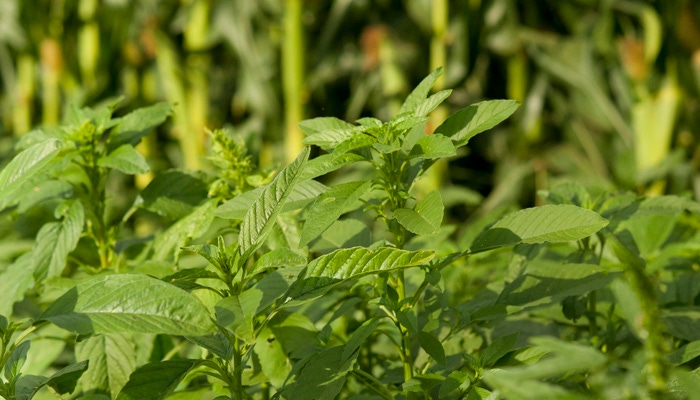
There are few jobs with more security than a weed scientist, quipped Aaron Hager, University of Illinois. Hager is an extension weed specialist and now spends a lot of his time talking about weed resistance, especially with waterhemp and horseweed. At Farm Progress Show, he spoke to packed audiences of growers about weed resistance.
Hager maintains that weeds constantly change and adapt to new chemicals, practices, etc. This is the nature of weeds. So a regimen today for weed control will not necessarily be successful in the future.
Recently, Hager recommended growers look over their crops during harvest for weed problems. If weed patches are spotted, he suggests the weeds may be glyphosate resistant.
Another possibility is a resistance to a different herbicide. “Resistance to five different herbicide site-of-action families has been documented to occur in Illinois waterhemp populations,” Hager says. “In all instances except one, these resistance traits can be transferred by movement of both pollen and seed.”
Herbicide-resistant weeds may first show up as a patch of weeds. Hager suggests hoeing these weeds out of the field before they can spread seed and move the trait to other areas.
“Female waterhemp plants have the potential to produce in excess of one million seeds per plant, although that number is usually much smaller when the waterhemp plants have grown under competitive conditions,” he says. “If you notice a few surviving female waterhemp plants in a field, it might be a good investment of time to remove these plants before they enter the combine. Combines can spread weed seed across a field and transport seed from one field to another.”
In fields with suspected herbicide-resistant weeds, Hager suggests harvesting those fields last. That will help prevent spreading the weed seeds into other fields. Or a grower can just avoid the weed patch when combining.
For more information, read the September 8 edition of The Bulletin at bulletin.ipm.illinois.edu.
About the Author(s)
You May Also Like






